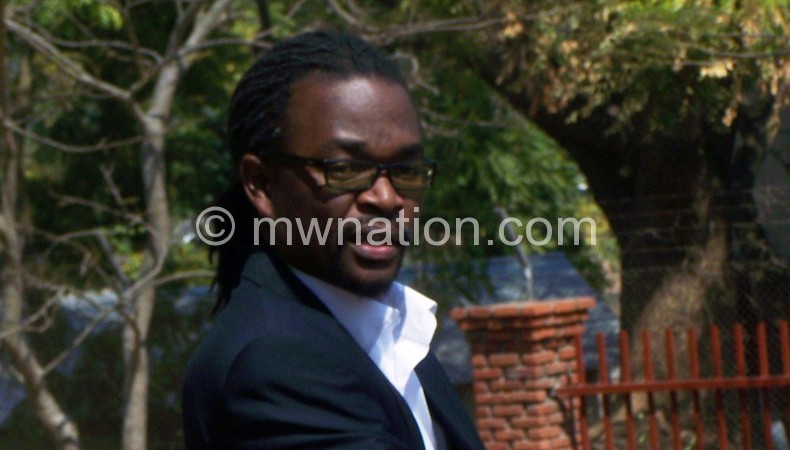Huge pay disparities in public sector
Weekend Nation has unearthed huge salary disparities between main civil service and other public organs, with instances of up to K1 million differences for people in the same grade.
For instance, should government bow to the demands of the judiciary, the Chief Justice, who heads that arm of government will be getting K1 072 047 more than what Chief Secretary, who heads the civil service, gets at the moment.

This is despite that the two public officers are in the same grade A of the Public Service structure.
According to documents we have verified with Treasury, before the October 2014 revision of salaries, the Chief Justice was already getting K612 598 more.
The Chief Justice’s salary was at K1 625 498 while that of the Chief Secretary was at K1 012 900.
After the October pay hike, the Chief Secretary’s salary stands at K1 772 575 while that of the Chief Justice was raised to K1 845 150 in line with the public service salary harmonisation policy government is pursuing.
However the Chief Justice, according to the Treasury documents, is demanding K2 844 622.
Speaker of the National Assembly, who is a head of an arm of government like the Chief Justice, was demanding a gross monthly package of K3 350 000 which President Peter Mutharika rejected.
This was K655 378 more than what the Chief Justice is demanding and K800 000 more than the K2 700 000, which the President was allocated, but he turned down.
According to Treasury documents, despite being in the same grade of B, the salary that the Supreme Court judges are demanding at K2 413 438 is K821 806 more than what the Deputy Chief Secretary is getting at K1 591 632, and K906 526 more than what government is offering at K1 506 912.
Even before the salaries were revised in October, Supreme Court judges were beating the deputy chief secretary by K391 336. The judges were at K1 149 256 while the deputy head of the civil service was at K757 920.
Despite the judges of the High Court and principal secretaries sharing grade C, judges have an upper hand in terms of salaries.
Before the October review, judges used to get K1 071 708 while a principal secretary received K608 430—a difference of K463 278.
After the review, the salary of a principal secretary was increased to K1 083 005 while judges were offered K1 210 420—a difference of K127 415.

But according to the Treasury documents, judges are demanding a salary of K1 907 640 which would create a gap of K824 635 between them and principal secretaries.
A director at grade D in the main civil service used to receive K457 245 now gets K850 476. In the Judiciary, an officer at the same grade D used to get K859 060, was offered K942 086 but is demanding K1 546 308, while a grade D officer among the Judiciary support staff used to get K551 271, were offered K815 038 but are demanding K1, 025 364.
In the office of the Director of Public Procurement, an officer in grade D used to get K809 751, but now gets K825 944.
At Parliament, the officer in that grade used to get K618 055 now gets K790 190 while at the Anti-Corruption Bureau (ACB) a person in grade D used to get K1 297 379 and now gets K1 427 117.
The Malawi Human Rights Commission used to pay a person in that same grade K901 183 but now gets K946 242. While at the office of the Ombudsman, a person in grade D used to receive K709 109 but now gets K948 938.
And yet at the Malawi Electoral Commission, the same grade attracted K854 078 but now it gets K948 938 like at the office of the Ombudsman.
Treasury spokesperson, Nations Msowoya, confirmed the figures when presented to him, explaining that the disparities started emerging in the public service mainly from 1994 during the democratisation process.
“When government started creating governance institutions, those hired to fill the positions in those institutions started negotiating differently,” he explained.
This, he said, also gave impetus to other existing organs of State to create structures that would make their conditions of service attractive.
“Previously, for instance, a driver would be transferred across the arms of government or through the entire public service. But when these things started, barriers were created which later created disparities,” he said.
He explained that like many countries, government has now decided to harmonise public service pay to eliminate remuneration injustices by introducing a policy that ensures equal pay for people with the same qualification doing the same kind and amount of work.
“The question that must always be answered in these matters is whether it is right to discriminate people working in the same public service and drawing their pay from tax payers. The people of Malawi must decide whether people who are paid by their tax must suffer discrimination,” Msowoya emphasized.
However in an earlier interview, Dr Mwiza Jo Nkhata, a law lecturer at the University of Malawi’s Chancellor College, said the exercise “may be illegal because in other institutions, the Constitution of the Republic dictates procedures of how a particular department would be remunerated.”
He argued that a wholesome harmonisation is unlikely to achieve equity, saying in some cases government negotiates contracts in different departments such that terms and conditions differ and it would be difficult for the Executive to change the set up.
A Weekend Nation survey found out that similar exercises to harmonise salaries of public workers have already taken place in Tanzania, Ghana, Kenya and Uganda.
Tanzania
In 2010, Tanzania also adopted a Public Service Pay and Incentive Policy (PSPIP) which provides a harmoniSed and unified framework for determining pay while eradicating pay disparities across the entire public service as stipulated in the Public Service Management and Employment Policy (Second Edition, 2008).
Writing in a foreword to the policy document, then Minister of State for Public Service Management, Abdulrahman Ghasia said the intervention was aimed at attracting and retaining well qualified personnel, in the public service, as well as motivating employees by addressing equitable remunerations across the service.
“Harmonisation and unification of pay will lead to salary enhancement for the entire public service especially for technical, professional and managerial cadres,” Ghasia wrote.






Excellent article on pay disparities in the public sector. This is the type of reporting from we expect from Nation and not the recent tabloid claptrap.
Apa nde mwayithatu a news. Komanso to be serious, this is one of the things that pitala has impressed me with. I am happy for him. I need more of this – he may win my vote.